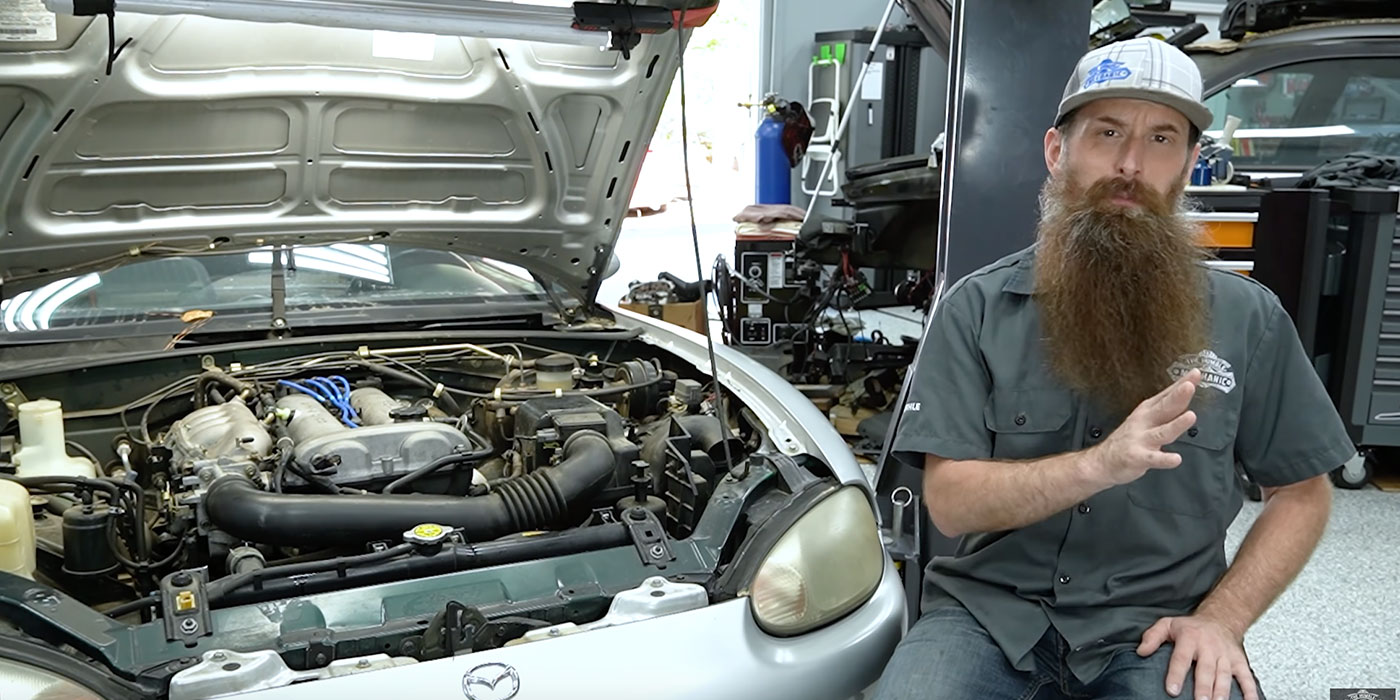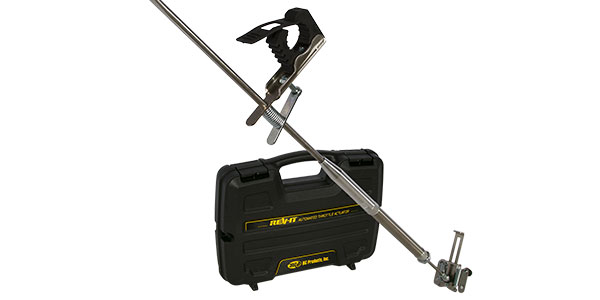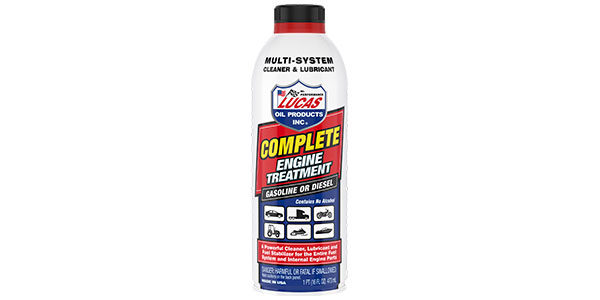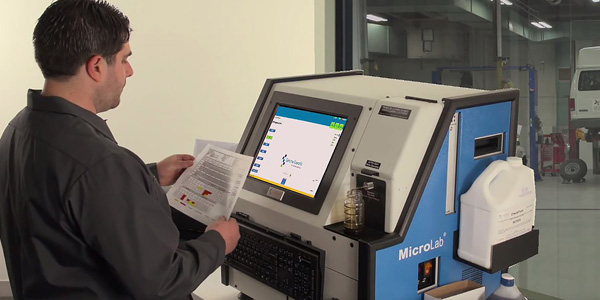Diesels are up to 30% more efficient than gasoline engines because they use high compression to ignite the fuel rather than spark plugs. High-pressure fuel injectors spray fuel directly into the combustion chambers when the pistons near top dead center. The heat of compression, combined with residual heat in the piston and cylinder head from the previous power stroke, ignites the fuel.
The only drawback with this approach is that a diesel can be hard to start when the engine is cold. Since there is no residual heat in a cold engine, some means of supplemental heat must be provided to make cold starting easier, especially when the outside temperature drops below freezing. Without this supplemental heat to get the fire going, the engine may not start at all. It will just crank and blow white smoke (unburned fuel vapor) out of the tailpipe.
The supplemental heat source for cold starting most passenger car and light truck diesel engines is the glow plug system. Some truck diesel engines use an electrically heated grid in the air intake system to provide start-up heat, but for now, glow plugs are still the primary aid for cold-starting small diesel engines.
 VW GLOW PLUG SYSTEMS
VW GLOW PLUG SYSTEMS
The late-model Volkswagen 1.9L TDI “Turbo Direct Injection” diesel engine in the Jetta, New Beetle and Golf, and the 2.0L turbo diesel in the Passat models use a Bosch “Duraterm” fast-start type of glow system that takes only a few seconds to reach 850° C (nearly 1,600° F). Once the glow plugs reach the operating temperature, the engine can be cranked. While cranking, the glow plugs continue to heat and may reach 1,150° C (2,100° F) until the engine starts.
The major components in the glow plug system are the glow plugs (one per cylinder), wiring harness, automatic glow time control module (located in the cowl plenum area of the engine compartment on the driver’s side), glow plug relay (in the auxiliary relay box), glow plug indicator lamp (the icon looks like a sideways coil spring), engine coolant temperature sensor and the engine control module. The engine also has three additional glow plugs for warming up the coolant following a cold start, but these are not required for starting the engine.
When the ignition switch is turned on, the engine control module looks at the engine temperature to see if supplemental heat is needed to start the engine. If the engine was recently driven and is still hot, the glow plugs are not needed and are not turned on. But if the engine has cooled off sufficiently or is cold (typically below 9° C or 48° F), the engine computer turns on the glow plug relay and control module. The module then routes voltage to the glow plugs, causing them to rapidly heat up. On older VW diesel engines, just a relay was used to power on the glow plugs (no separate module).
The glow plugs are located in the cylinder head and the tips extend all the way into the combustion chambers in the TDI engine. This allows the heat to be quickly absorbed by the incoming air charge. In the older VW diesel engines with prechamber heads (1.9L and 1.6L), the glow plugs extended only into the prechambers and are just below the fuel injector. This setup takes more heat because much of the heat is absorbed by the prechamber itself. Eliminating the prechambers and extending the glow plugs into the combustion chamber significantly reduces the warm-up time, and also allows the glow plugs to continue to assist the ignition process after the engine starts and is warming up.
On the 1980s vintage VW diesels, the glow plugs were turned off once a predetermined starting temperature was reached. Starting in the 1990s, the glow plugs were kept on while the engine was cranking, and for a brief period after the engine began to run, to prevent the engine from stalling. A thermo time switch or the engine control module turned off the glow plug relay when the supplemental heat was no longer needed. On the latest generation of VW TDI diesel engines, the glow plugs remain on for up to four minutes after the engine starts to smooth the idle, and reduce noise and hydrocarbon emissions. Exhaust emissions are highest following a cold start, so keeping the glow plugs on during a “post-glow” period allows the engine to meet lower emission standards. In this respect, the glow plugs act almost like spark plugs to keep the fire lit until the engine’s temperature stabilizes and emissions taper off. If engine speed goes above 2,500 rpm during the warm-up period following a cold start, the computer will shut off the glow plugs. The latest VW glow plugs are made of more durable materials, and are designed for a longer service life. On the Bosch glow plugs, the tube that extends into the combustion chamber is made of Inconel 601 steel, which is highly corrosion resistant. A pair of high-temperature Viton seals are used to seal the tube and internal heating coil to the gas-tight tube, and a ceramic powder is used inside the tube to provide good thermal conductivity. The glow plugs are designed to last upward of 100,000 miles, and most do — but some do not.
 GLOW PLUG PROBLEMS
GLOW PLUG PROBLEMS
If the glow plug system is not working correctly, the most common symptom is typically hard cold starting, which may be accompanied by a rough cold and/or white smoke (unburned fuel vapor) in the exhaust. Just remember that these same symptoms can also be caused by other things such as incorrect injector timing, worn or clogged fuel injectors, or poor fuel quality during cold weather.
The resistance of the glow plugs is critical for proper heating and operation. The resistance of the glow plugs will change as they age, but as long as they stay equal and do not exceed specifications (typically 0.5 to 1.0 ohms), they should continue to function normally. Also, the wiring harness and connectors that supply voltage to the glow plugs must be tight and corrosion-free.
On the newer VWs, the onboard diagnostic system monitors the operation of the glow plug system, and may set one or more fault codes if a problem is detected.
 On the older VW prechamber non-TDI diesel engines, a problem in the glow plug system will often set a P0380 fault code. Unfortunately, there are no additional codes on these applications to help you figure out where the problem is, or which glow plug may be at fault.
On the older VW prechamber non-TDI diesel engines, a problem in the glow plug system will often set a P0380 fault code. Unfortunately, there are no additional codes on these applications to help you figure out where the problem is, or which glow plug may be at fault.
On the newer diesels, the diagnostics is better.
There are more codes, including ones for individual glow plugs:
P0671 – Cylinder 1 glow plug circuit
P0672 – Cylinder 2 glow plug circuit
P0673 – Cylinder 3 glow plug circuit
P0674 – Cylinder 4 glow plug circuit
P1616 – Glow plug indicator lamp circuit shorted to positive
P1617 – Glow plug indicator lamp circuit shorted to ground
P1618 – Glow plug relay shorted to positive
P1619 – Glow plug relay shorted to ground
P3000 – Glow plug indicator lamp circuit on CAN bus fault
When glow plugs fail, the heating element inside typically burns out and goes open. Testing the glow plug with an ohmmeter (with the wiring harness disconnected and power off) will show if the plug has any resistance. Zero resistance would tell you the glow plug has burned out and needs to be replaced. A good glow plug should have a resistance between 0.5 to 1.0 ohms.
In rare instances, a glow plug may short to ground when it fails. Because the glow plug circuit is a high-amperage circuit, a shorted glow plug will overload the circuit and may cause the fuse (or fusible link on older VWs) to blow.
Here’s a tech tip from the TDIclub.com website: If the Check Engine light comes on approximately 30 seconds after starting the engine (and there are no obvious driveability problems other than hard starting), the cause may be a bad glow plug or a fault in the glow plug circuit. If you find a “glow plug monitoring” fault with a VAG-COM or other scan tool, remove the wiring harness from the glow plugs and measure the resistance between each glow plug terminal and the engine block. All four glow plugs should measure between 0.5 to 1.0 ohms, with no more than 0.2 ohms difference between all of the plugs. If any glow plugs are outside this range, or vary more than 0.2 ohms from the others, consider replacing all four glow plugs with new ones.
Also, check the main glow plug fuse (it’s visible under a small clear plastic cover in the engine compartment usually near the battery or firewall). If the fuse is okay, and the glow plugs pass a resistance check, the most likely problem would be a poor electrical connection between the harness and the glow plugs. Remove the glow plug connectors and clean the contacts, or replace the harness. VW usually recommends replacing the glow plug relay, but only in rare instances does the relay go bad. Volkswagen has a special glow plug tester, VAG 1527B, for testing the glow plugs. To use the tester, unplug the connector from each glow plug, attach the tester positive lead to battery positive, and the negative lead to the glow plug. If the LED on the tester lights up, the glow plug is okay. If the LED on the tester does not light up, replace the glow plug.
You should also test to see that the glow plugs are receiving voltage when the ignition is turned on, and that the voltage continues during cranking and for a short time after the engine has started. No voltage to the glow plugs would indicate a bad control module, relay, fuse or wiring fault.
Another way to quick-check the glow plugs without having to use a voltmeter or ohmmeter is to use an infrared thermometer (Note: This works only on a cold engine). Cycle the ignition on and off a couple of times to heat up the glow plugs. Then aim the infrared thermometer at each glow plug so see if all the plugs are generating heat. If you find a cold plug that isn’t heating up, the glow plug or wiring connector is bad and needs to be replaced.
GLOW PLUG REPLACEMENT
The worst thing that can happen when a glow plug burns out is for the tip to break off inside the engine. The tight clearances in the combustion chamber don’t allow any room for chunks of metal to bounce around. This may damage the piston, valves or cylinder head.
Sometimes the tip of a glow plug will mushroom when it fails, making it nearly impossible to remove. Replacement may require removing the cylinder head and drilling out the glow plug. Thread repairs may also be required depending on what’s needed to extract the old plug.
In most instances, the glow plugs can be changed just like a spark plug. Use a deep well socket to unscrew the old glow plugs and to install the new ones. Be careful not to overtighten the glow plugs or you may damage the glow plug or strip the threads in the cylinder head. Thread the glow plug in by hand, turn it a couple of times to make sure the threads are aligned properly, then hand-tighten to the recommended torque (15 Nm or 11 ft.-lbs.). The threads on the glow plug can be lightly coated with anti-seize to make future replacement easier.
Also, compare the old and new glow plugs before you install the new ones to make sure they are the same length. If the replacement plugs are too short on a TDI engine, they won’t extend into the combustion chamber to provide adequate heat. And if they are too long, they may hit something.
The part number for Bosch glow plugs that fit the 1996 to 2007 1.9 TDI engines is 0-250-202-022. The part number for the glow plugs that fit the 1979 to 1996 diesel engines is 0-250-201-032.
WEIRD STUFF
If the glow plug indicator light on a TDI diesel flashes while driving, it doesn’t indicate a fault with the glow plug system. For some reason, VW decided to use the glow plug light as a “bulb out” indicator lamp if a brake light has burned out. A bad brake light switch can also cause the same thing to happen. Wouldn’t it have been less confusing to warn the driver with a “lamp out” light or icon? Go figure.
The vehicle owner may also complain of clicking noises coming from the vicinity of the glow plug relay located in the fuse panel near the base of the steering column. The noise is from the relay switching on and off as supplemental heat is used during engine warm up to reduce emissions. The high current drawn by the glow plugs may also cause the lights to dim slightly when the relay clicks on. But don’t worry, VW says this is normal.








